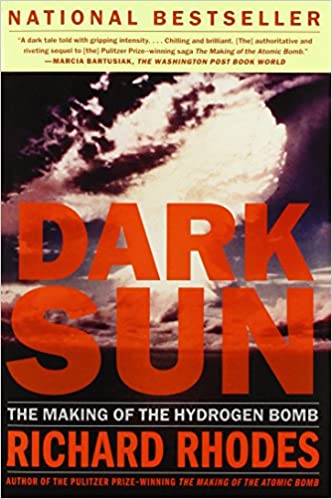 The subtitle of Richard Rhodes book implies that it is a sequel to The Making of the Atomic Bomb which it is . . . and it isn’t. Rhodes begins telling the story of the United States’ creation of the hydrogen bomb on page 382 of this 588-page book, but the material in pages 1 through 381 is compelling as it tells the story of the Soviet espionage project that gave its scientists enough knowledge to build a nuclear laboratory and the equipment necessary to build an atomic bomb shortly after World War II, and adds numerous stories of the various geopolitical wars, domestic political wars, and wars within the scientific community that made up the drama of the post-war atomic era.
The subtitle of Richard Rhodes book implies that it is a sequel to The Making of the Atomic Bomb which it is . . . and it isn’t. Rhodes begins telling the story of the United States’ creation of the hydrogen bomb on page 382 of this 588-page book, but the material in pages 1 through 381 is compelling as it tells the story of the Soviet espionage project that gave its scientists enough knowledge to build a nuclear laboratory and the equipment necessary to build an atomic bomb shortly after World War II, and adds numerous stories of the various geopolitical wars, domestic political wars, and wars within the scientific community that made up the drama of the post-war atomic era.
They are compelling stories, and I neither want to nor can tell them all to you here as they are too numerous and you will enjoy reading them yourself, unburdened in this book by a lot of the difficult science found in Rhodes earlier book (The Making of the Atomic Bomb).
But I’ll give you a few bullet points to whet your appetite.
-
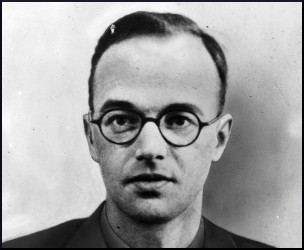
Klaus Fuchs You may already know that Klaus Fuchs was the lead source of leaked information about the Manhattan Project. What you may not know is that this German-born physicist had emigrated to England before the war where he made important contributions to British nuclear research work and was given British citizenship as a reward. Subsequently, he was invited to Los Alamos where he led the design team that created the lensed explosives required to make the plutonium implosion device used in the Trinity test and Nagasaki bombs work.
- The network of information carriers that moved the information from the New Mexico high desert to Moscow was comprised of quite a few Americans connected in various ways to Fuchs. Julius and Ethel Rosenberg were relatively minor players but were executed for their crime even though the crime was espionage, not treason – the Soviet Union at that time was an ally, not an enemy. For his part, Fuchs was sentenced to 14 years of prison by Britain.

- The Soviets used the information stolen from the Manhattan Project, added to the information they had in hand from prewar German research, to create a Los Alamos-like nuclear research center at Sarov (east of Moscow) directed by physicist Igor Kurchatov who reported to the notorious NKVD director Beria.
- General Curtis LeMay was a WWII hero for having engineered and led the massive carpet-bombing campaigns that destroyed cities in Germany and Japan, so was tasked with creating the Strategic Air Command (SAC) after the War. He created it with tactics that kept B29 and later model bombers in the air 24×7, and he made it into its own war policy center, one that could launch nuclear weapons on its own authority if it felt the need (urge?) and couldn’t reach the President.
-
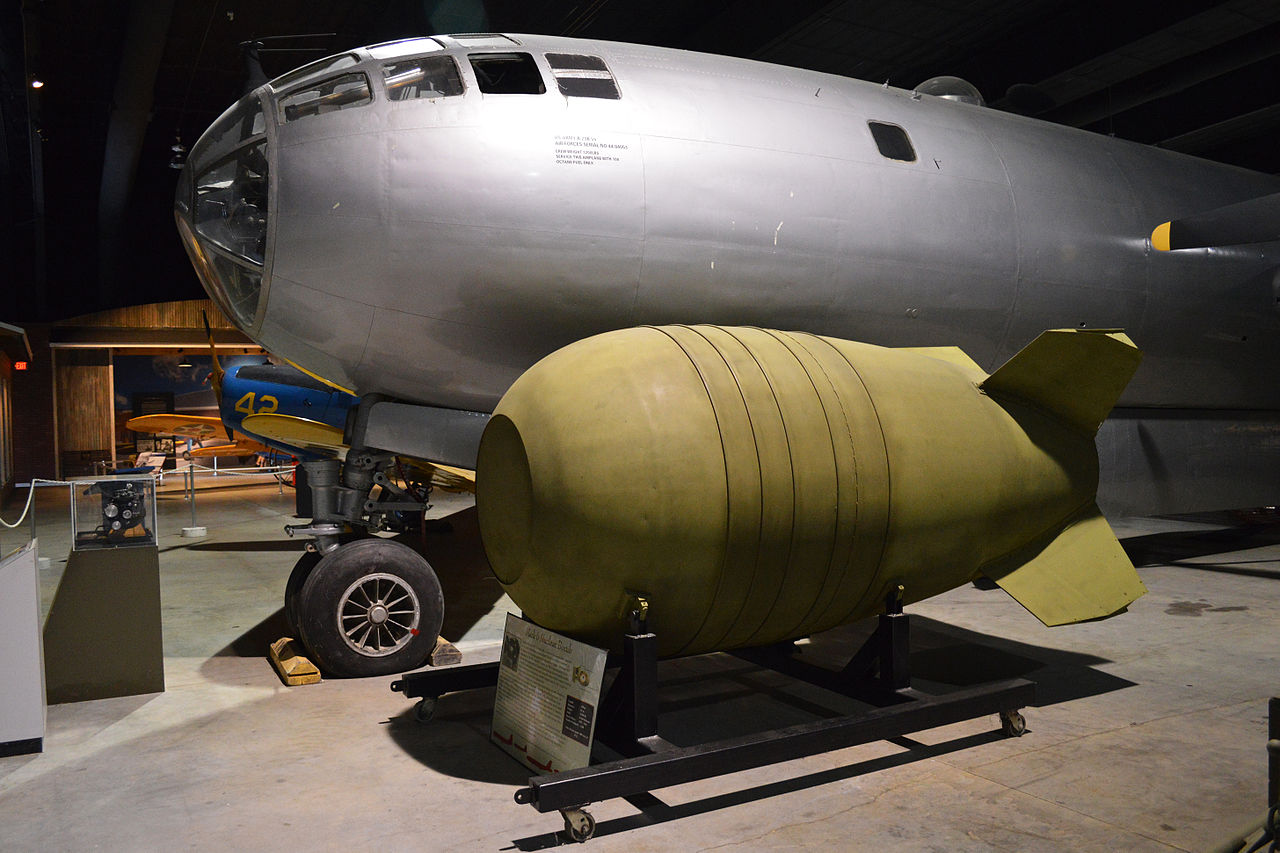
B29 with nuclear bomb During the Korean War, at the behest of General MacArthur, SAC positioned nine B29’s loaded with atomic bombs in Okinawa, prepared to obliterate North Korea if it was seen that the war was going badly. By the way, the war was brought to an uneasy truce because Josef Stalin wanted to stop wasting manpower and money on it.
- After the Soviets exploded “Joe 1”, their first atomic bomb in August of 1949, the pressure was on in the U.S. to create the Hydrogen Bomb, known then as the “Super.” Two scientific committees, including the newly created Atomic Energy Commission, recommended against it for moral reasons, but President Truman, enthralled by the erratic Hungarian nuclear physicist and enthusiastic H-Bomb designer Edward Teller, decided to go ahead with it anyway.
- Teller walked off the project (as he had during the development of the atomic bomb) when things weren’t
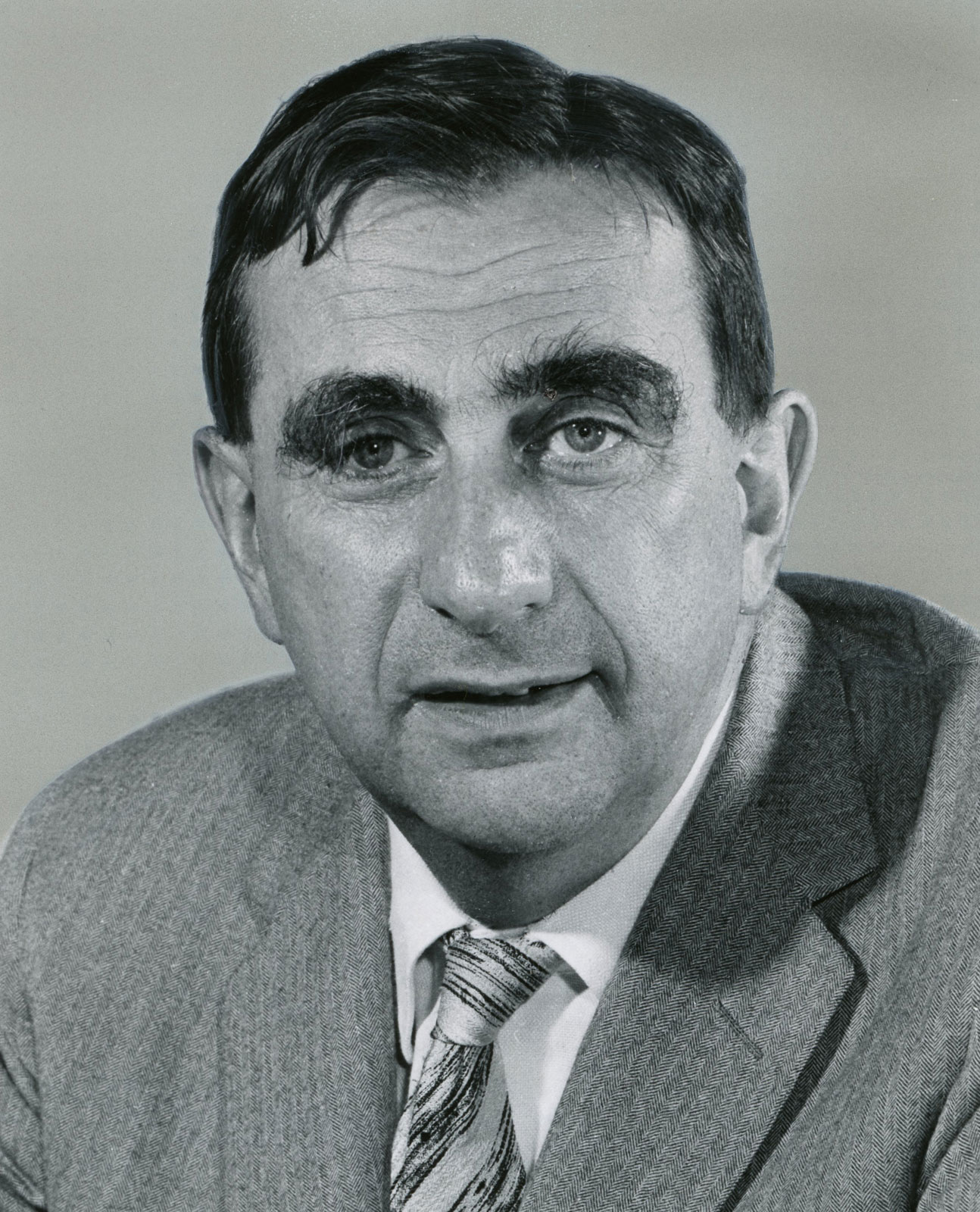
Edward Teller going his way – including a redesign of his original work done by Stanislaus Ulam. The ultimate design (still in use today) is called the Teller-Ulam design. The first test shot, called “Mike,” yielded 10 megatons, a 3 mile-wide fireball, and created a crater 200 feet deep in the Pacific island on which it was tested.
- The Cuban Missile Crisis of 1962 was a closer pass at nuclear war than most people realize. Not only did the Soviets have 19 nuclear-equipped missiles capable of
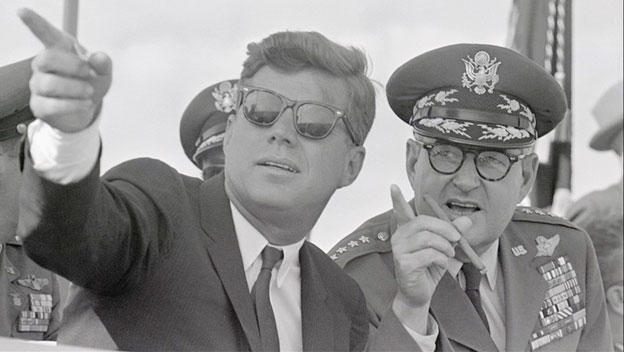
President Kennedy and General LeMay argued during the Cuban Missile Crisis – Kennedy won and averted starting a nuclear war. hitting Washington, D.C. ready to assemble and be launched in Cuba, Curtis LeMay was urging President Kennedy to launch a first nuclear strike against Cuba. Even then, such an action would have largely annihilated both countries and you can thank the Kennedy brothers, Secretary McNamara and National Intelligence Director McGeorge Bundy for pushing LeMay back.
- Dr. J. Robert Oppenheimer, the genius physicist who led the Manhattan Project in its successful creation of the atomic bomb was pilloried by politicians including Truman and Eisenhower for failing to push the hydrogen bomb project sooner and faster. From the time of the Manhattan Project he had resisted pressure from Teller to build the “Super” because he felt its power was unnecessary and immoral. One conclusion of the book is that Teller’s insistence on multi-megaton yields from the Super prevented the project from getting started on a simpler, lower yield bomb, not Oppenheimer’s objections. Nevertheless, after a largely rigged hearing in which Teller testified against him, Oppenheimer lost his security clearance and much of the good-humored spirit that had kept the Manhattan project going.
I think the most profound of Rhodes’ conclusions in the epilogue is that the cost of creating nuclear weapons ruined the ability of the Soviet economy to recover from the war and grow the country into an economic power. Furthermore, he concludes nuclear projects did much to saddle the United States with debt from the end of the war to this very day which has impacted our economic strength.
All that, and we don’t have weapons. What we have instead is the ability to achieve mutual destruction and that is not anyone’s definition of war. It turns out that such Mutually Assured Destruction is not even much of a bargaining tool.
It’s an important book that lays down the foundation of the nuclear age in which we live. Don’t miss it.
Recent Comments